Reclining Office seat
Original price was: KSh 28,500.00.KSh 23,000.00Current price is: KSh 23,000.00.
Reclining Office seat
A Reclining Office seat is a versatile and comfortable seating option designed to provide ergonomic support and relaxation during extended periods of sitting. It features a reclining mechanism that allows the user to adjust the backrest angle to a more comfortable position, promoting spinal alignment and reducing strain on the back and shoulders.
Key Features of a Reclining Office seat:
-
Ergonomic Design: Reclining office chairs are designed to provide ergonomic support for the spine, neck, and shoulders, promoting proper posture and reducing discomfort associated with prolonged sitting.
-
Reclining Mechanism: The chair’s reclining mechanism allows the user to adjust the backrest angle, typically between 90 and 135 degrees, enabling a more relaxed and comfortable position.
-
Adjustable Backrest and Lumbar Support: The backrest and lumbar support should be adjustable to fit the individual’s body shape and provide personalized support for the lower back.
-
Contoured Seat and Waterfall Edge: The seat should be contoured to fit the natural curvature of the buttocks and thighs, distributing weight evenly and reducing pressure points. The waterfall edge design helps to alleviate pressure on the underside of the thighs, improving circulation and preventing numbness.
-
Adjustable Seat Height and Armrests: The seat height should be adjustable to allow the user’s feet to rest flat on the floor while maintaining proper posture. Armrests should be adjustable to provide support for the arms and shoulders, reducing muscle fatigue and strain.
Benefits of Using a Reclining Office seat:
-
Enhanced Comfort and Relaxation: The reclining mechanism allows for a more comfortable and relaxed sitting position, reducing strain on the back and promoting relaxation during breaks or downtime.
-
Improved Posture and Spinal Alignment: The ergonomic design and adjustable backrest support help to maintain proper posture and reduce strain on the spine, neck, and shoulders.
-
Reduced Back Pain and Fatigue: By promoting proper posture and reducing muscle strain, reclining office chairs can help to prevent back pain, fatigue, and discomfort associated with prolonged sitting.
-
Increased Productivity: Increased comfort and reduced discomfort can contribute to improved focus and productivity throughout the workday.
-
Versatility for Different Tasks: Reclining office chairs can be used for various tasks, from focused work sessions to casual meetings or relaxed breaks.
Considerations for Choosing a Reclining Office seat:
-
Individual Needs and Preferences: Consider your individual needs and preferences, such as body type, desired comfort level, and the amount of adjustability you require.
-
Reclining Mechanism and Range: Evaluate the reclining mechanism’s smoothness, ease of operation, and the range of reclining angles to ensure it meets your comfort preferences.
-
Ergonomic Features and Adjustability: Check for adjustability in the backrest, lumbar support, seat height, and armrests to ensure a personalized fit and optimal support.
-
Material and Durability: Choose a chair made from durable materials like leather, fabric, or mesh that can withstand regular use and maintain its comfort and support over time.
-
Budget: Set a realistic budget and consider the chair’s features, adjustability, brand reputation, and warranty before purchasing.
Overall, a Reclining Office seat offers a combination of comfort, ergonomics, and versatility, making it a valuable addition to any workspace. By providing adjustable support, a reclining mechanism, and ergonomic design, it can help to improve posture, reduce back pain and fatigue, and enhance overall productivity throughout the workday.
An Ergonomic office chair is specifically designed to support the body, particularly the spine, during extended periods of sitting. These chairs are engineered to promote proper posture, alleviate discomfort, and reduce the risk of musculoskeletal issues such as back pain, neck strain, and sciatica. Here’s a detailed description:
1. Ergonomic Design:
- Adjustable Seat Height: The chair typically features a gas lift mechanism that allows users to adjust the seat height easily. This ensures that the user’s feet are flat on the floor, knees are at a 90-degree angle, and thighs are parallel to the ground, promoting proper blood circulation.
- Adjustable Backrest: The backrest can usually be tilted or adjusted to different angles. Some models offer a reclining function, allowing the backrest to be locked at various positions to support different sitting postures.
- Lumbar Support: One of the key features of an ergonomic chair is its built-in lumbar support. This support is designed to follow the natural curve of the lower spine, reducing pressure on the lower back and preventing slouching. Some chairs offer adjustable lumbar support, allowing users to move it up or down to fit their specific needs.
2. Materials:
- High-Density Foam Padding: The seat and backrest are often padded with high-density foam to provide firm support while maintaining comfort. This padding helps distribute body weight evenly, reducing pressure points.
- Breathable Mesh or Upholstery: The backrest is commonly made of breathable mesh, which allows for airflow, keeping the user cool and comfortable during long periods of sitting. Alternatively, some chairs are upholstered in fabric or leather, offering a more luxurious feel.
- Durable Frame: The chair’s frame is usually made from sturdy materials like steel or reinforced plastic, ensuring durability and stability.
3. Key Features:
- Headrest: It comes with an adjustable headrest that supports the neck and head, reducing strain on the cervical spine. The headrest can often be tilted or moved up and down to match the user’s height.
- Armrests: The armrests are typically adjustable in height. This allows users to position their arms comfortably, reducing strain on the shoulders and neck. Some models also feature padded armrests for additional comfort.
- Tilt and Recline Mechanism: Ergonomic chairs often include a tilt and recline mechanism that allows users to adjust the angle of the seat and backrest. This feature helps in maintaining a relaxed posture and can be locked in various positions for different activities, such as working, reading, or resting.
- Swivel Base and Casters: The chair typically has a 360-degree swivel base, allowing easy movement and access to different parts of the workspace without straining. The base usually features smooth-rolling casters that are suitable for different flooring types, providing stability and ease of movement.
4. Health Benefits:
- Posture Improvement: The chair’s design encourages proper posture, reducing the likelihood of developing back, neck, and shoulder pain.
- Reduced Pressure on Spine: The lumbar support and adjustable features help reduce the pressure on the spine, particularly the lower back, which is often affected by prolonged sitting.
- Increased Comfort: The padding, adjustable features, and ergonomic design work together to provide a comfortable seating experience, even during long workdays, reducing fatigue and discomfort.
- Improved Circulation: Features like adjustable seat height and depth, combined with a proper sitting posture, help maintain healthy blood circulation, reducing the risk of issues like deep vein thrombosis.
5. Customization Options:
- Personalization: Ergonomic chairs are highly customizable, with options to adjust almost every aspect of the chair to fit the user’s body dimensions and comfort preferences. This includes height, tilt, recline, armrest position, and lumbar support.
- Color and Finish: Some models offer a range of colors and finishes, allowing users to match the chair with their office decor.
6. Aesthetic and Style:
- Modern and Professional: While Ergonomic chairs are primarily designed for functionality, they often feature a sleek, modern design that complements professional office environments. The aesthetic typically focuses on clean lines and a minimalist look, with an emphasis on functionality.
7. Applications:
- Office Work: Ideal for professionals who spend long hours at a desk, ensuring comfort and reducing the risk of musculoskeletal issues.
- Home Office: Perfect for home office setups, providing the same level of ergonomic support found in professional office settings.
- Gaming: Suitable for gamers who require long-term sitting comfort, often featuring similar ergonomic adjustments as high-end gaming chairs.
8. Maintenance:
- Durability: Designed for long-term use, with high-quality materials that resist wear and tear.
- Easy to Clean: The materials used, particularly mesh and synthetic fabrics, are often easy to clean with regular wiping or vacuuming.
An ergonomic office chair is an essential piece of furniture for anyone who spends significant time sitting at a desk. It combines ergonomic design with customizable features to provide superior support, comfort, and health benefits, making it a valuable investment for long-term well-being.

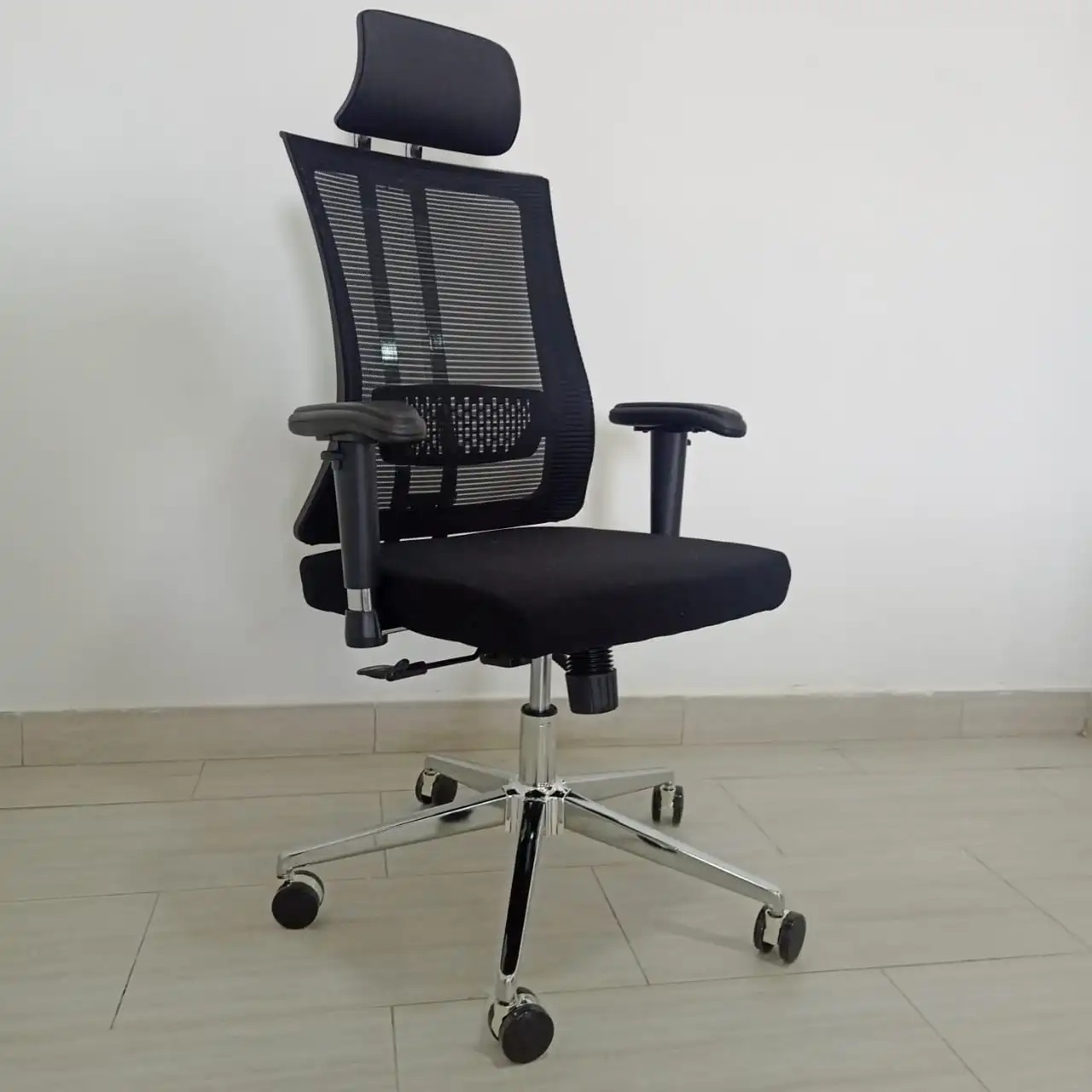
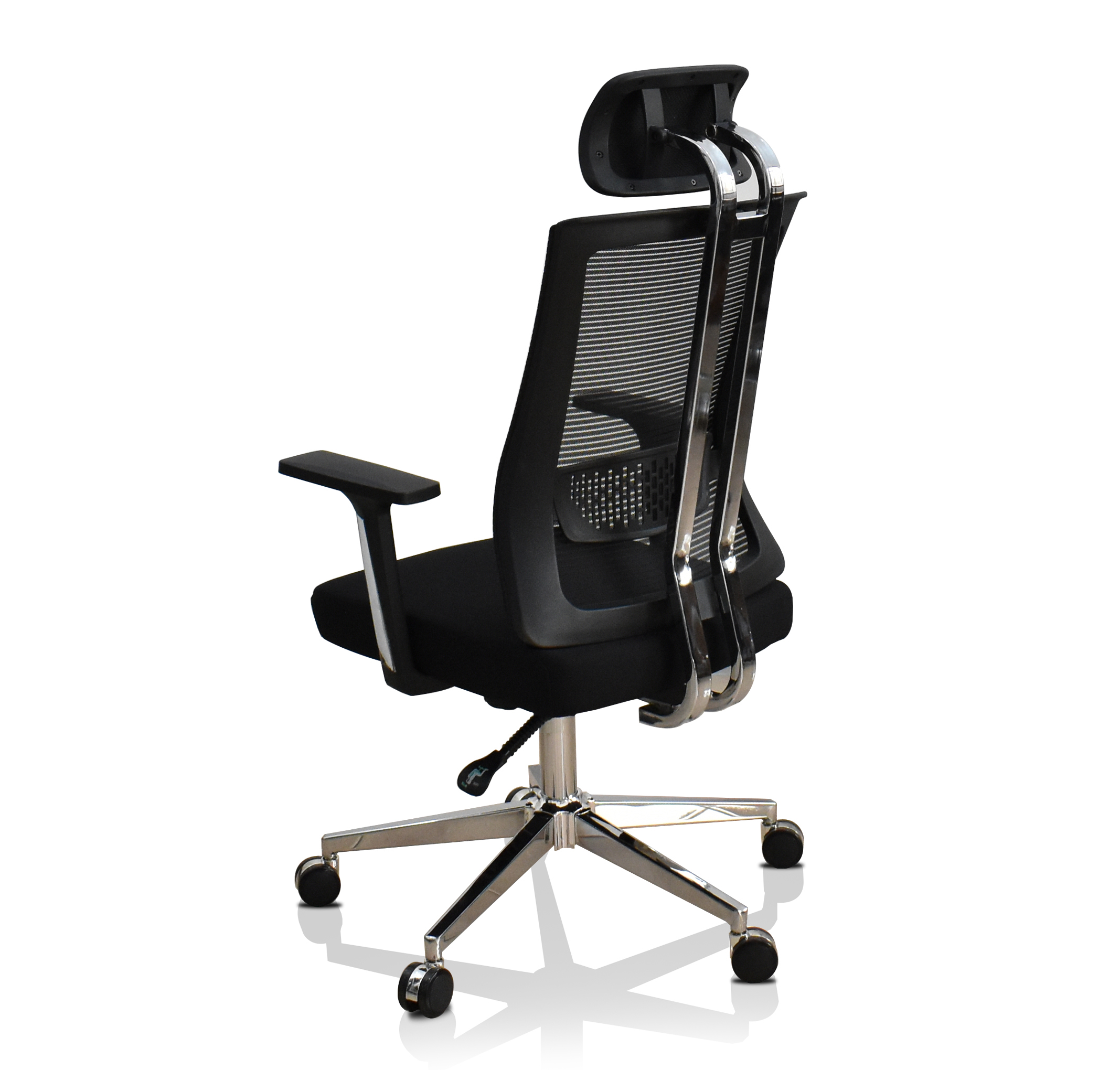
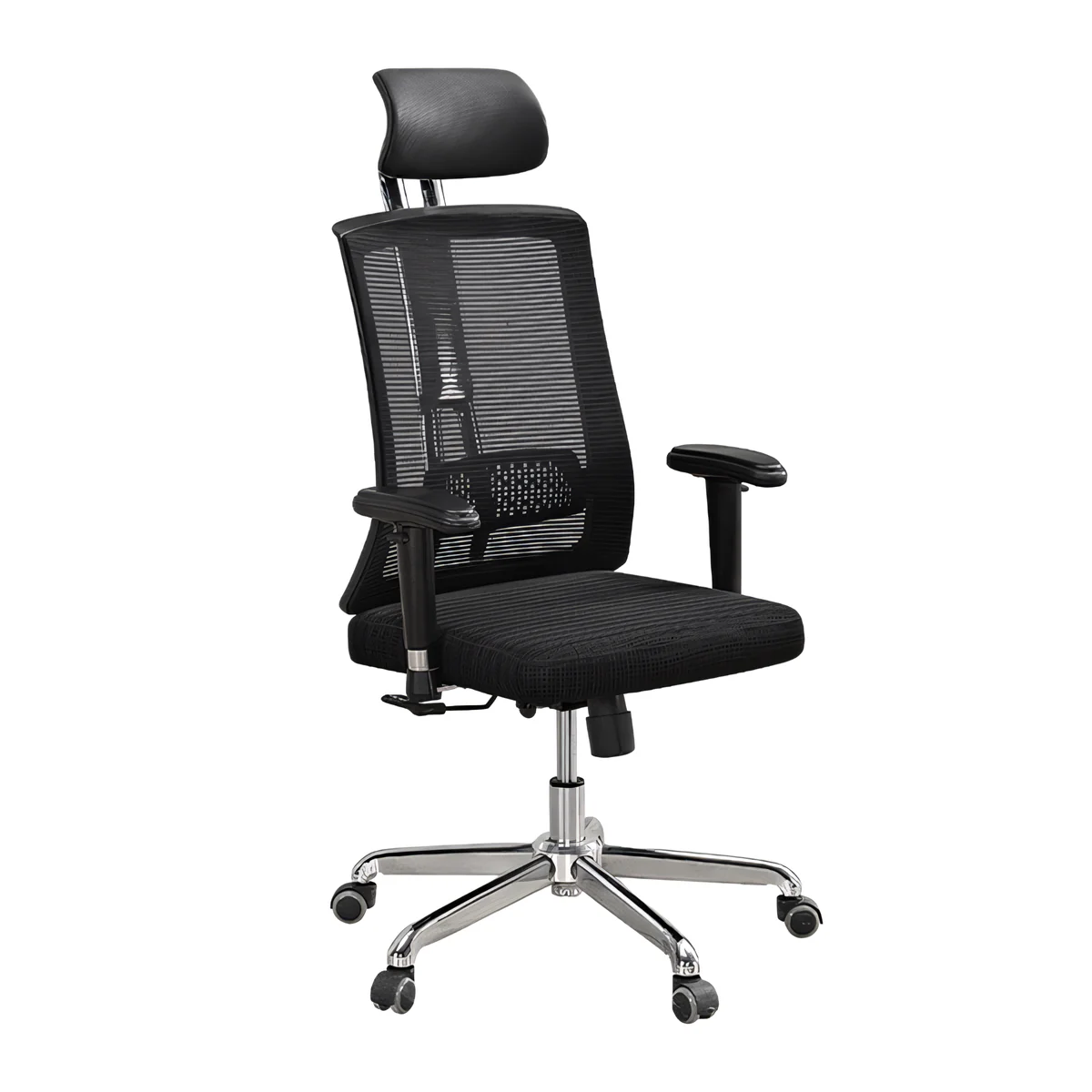
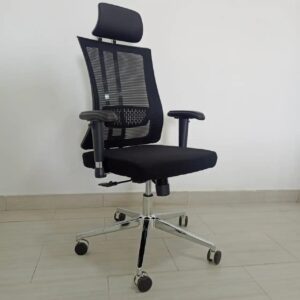
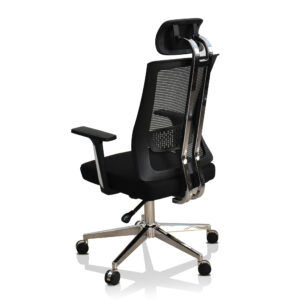
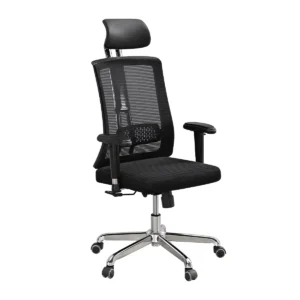
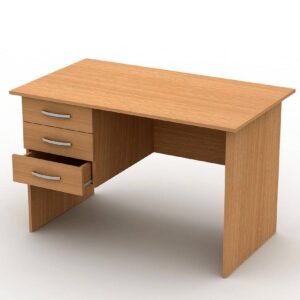
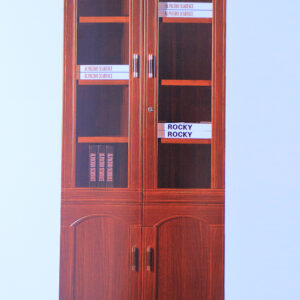


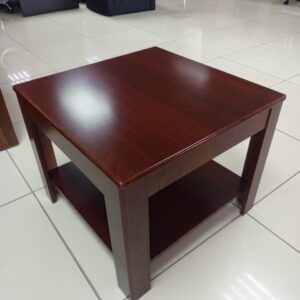
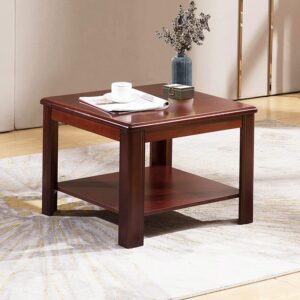

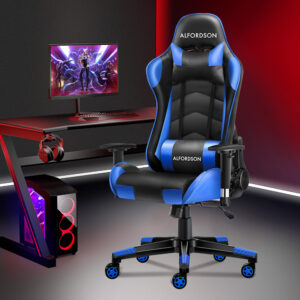
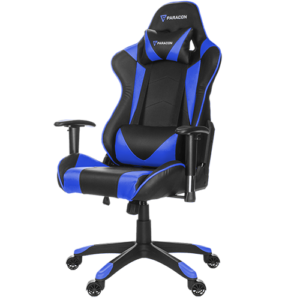
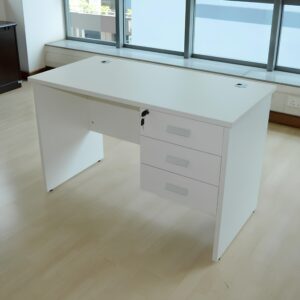
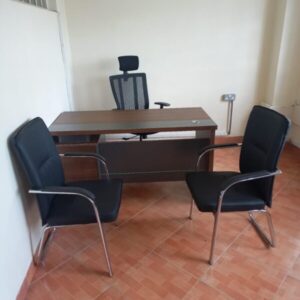
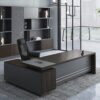
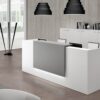
Reviews
There are no reviews yet.